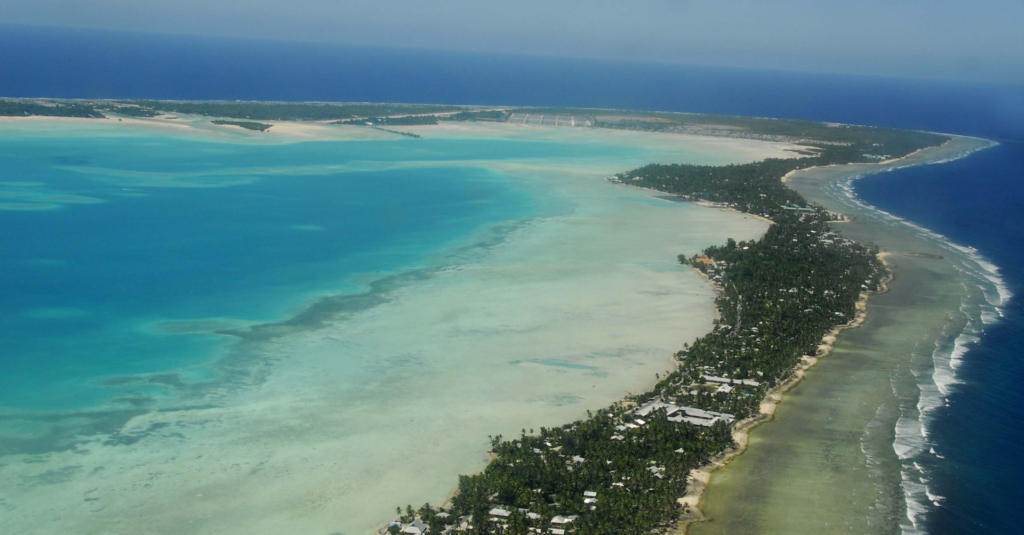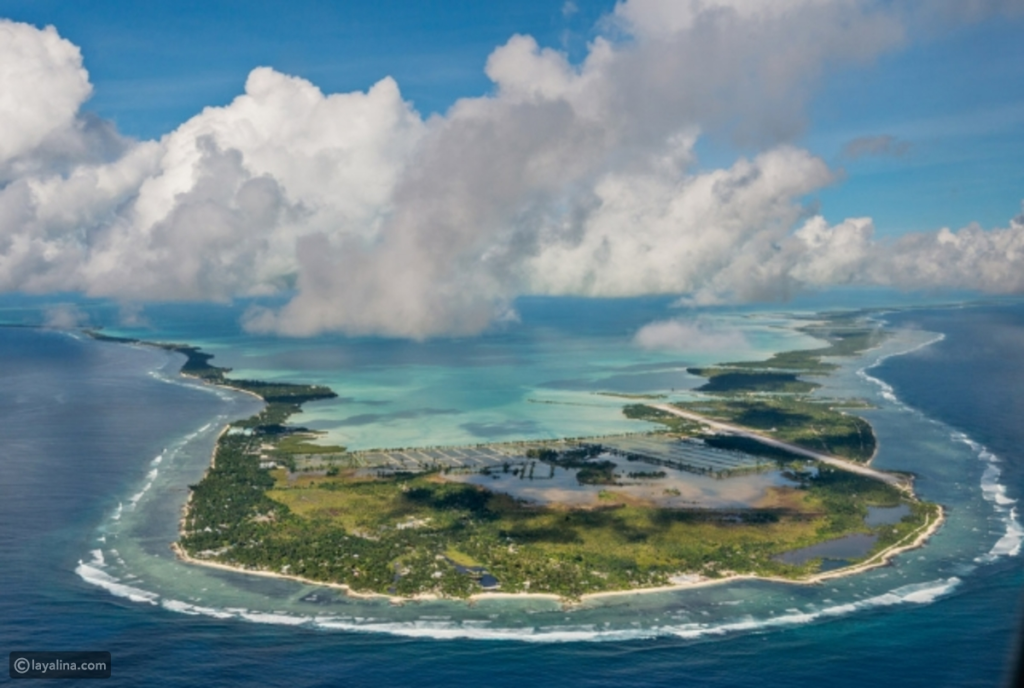Discovering Kiribati: An Adventurous Traveler’s Guide

Introduction
Kiribati, an island nation scattered across the central Pacific Ocean, is a destination like no other. Comprising 33 atolls and reef islands, Kiribati offers a unique blend of unspoiled natural beauty, rich cultural heritage, and genuine hospitality. For the adventurous traveler, Kiribati promises an experience of a lifetime, far removed from the typical tourist trail. This guide will explore the wonders of Kiribati and provide practical advice on booking accommodations in this remote paradise.
The Allure of Kiribati
Untouched Natural Beauty
Kiribati’s natural landscapes are pristine and breathtaking. The Gilbert Islands, Line Islands, and Phoenix Islands each offer their own unique charm. The Phoenix Islands Protected Area (PIPA), a UNESCO World Heritage site, is one of the largest marine protected areas in the world. Here, you can dive into crystal-clear waters teeming with vibrant coral reefs and diverse marine life, including sharks, rays, and tropical fish.
Cultural Richness
Kiribati’s culture is deeply rooted in its Polynesian and Micronesian heritage. The traditional way of life, known as Te Mauri, is centered around community, respect for nature, and ancestral customs. Visitors can experience this rich culture through dance performances, local crafts, and by participating in traditional ceremonies. The Maneaba, a communal meeting house, is the heart of social and cultural activities in each village.
Adventure and Exploration
For those seeking adventure, Kiribati offers a range of activities from snorkeling and scuba diving to fishing and bird watching. The remote atolls provide excellent spots for kayaking and sailing, allowing you to explore the hidden corners of this island paradise. The Tarawa Atoll, the capital, is steeped in World War II history, with relics and memorials that tell the story of the fierce battles fought here.
Booking Hotels in Kiribati
Limited but Welcoming Accommodations
Given its remote location, Kiribati has a limited number of hotels and guesthouses, but what it lacks in quantity, it makes up for in warmth and hospitality. Accommodations range from simple guesthouses to small boutique hotels, often run by local families who provide a welcoming and authentic experience.
How to Book
- Online Booking Platforms: Websites like Booking.com and Agoda list a few of the available accommodations in Kiribati. However, due to the limited number of properties, not all hotels may be listed online.
- Local Travel Agencies: Contacting local travel agencies can be a more effective way to secure a booking. Agencies like Kiribati Holidays can provide personalized recommendations and handle reservations on your behalf.
- Direct Contact: Many guesthouses and smaller hotels in Kiribati do not have an online presence. Directly contacting the accommodations via phone or email is often necessary. The Kiribati Tourism Office provides contact details for various accommodations across the islands.
Recommended Stays
- Mary’s Motel in Tarawa: A friendly and comfortable option in the capital, offering basic amenities and close proximity to local attractions.
- Terau Beach Bungalows in Abaiang: Perfect for those seeking a rustic and intimate experience, with beachside bungalows and stunning ocean views.
- Tabon Te Keekee Eco Lodge in Abemama: An eco-friendly option that offers a unique opportunity to stay in traditional-style bungalows while supporting sustainable tourism practices.
Must-Visit Destinations
Tarawa Atoll
Tarawa Atoll, the heart of Kiribati, is both the administrative and commercial center. Visit the Kiribati National Museum to learn about the island’s history and culture. Explore Betio Island, where World War II relics and memorials stand as a testament to the fierce battles fought here.
Kiritimati (Christmas Island)
Kiritimati, the largest atoll in the world, is a paradise for anglers and bird watchers. The island is renowned for its bonefishing and boasts a diverse array of bird species, including the endangered Phoenix Petrel. The island’s lagoons and beaches offer serene spots for relaxation and exploration.
Abaiang Atoll
Abaiang Atoll is a short boat ride from Tarawa and offers a glimpse into traditional I-Kiribati life. Stay in a local guesthouse, visit the marine conservation area, and enjoy the pristine beaches. The atoll’s vibrant coral reefs are perfect for snorkeling and diving.
Butaritari Atoll
Known as the “Green Island,” Butaritari is lush and fertile, making it an excellent spot for exploring lush landscapes and traditional agriculture. The island’s history as a World War II base is also evident, with remnants of military installations scattered across the atoll.

Tips for Traveling in Kiribati
- Plan Ahead: Kiribati is a remote destination with limited tourism infrastructure. It’s important to plan your trip in advance, including flights, accommodations, and activities. Research the islands you want to visit, check for any travel advisories, and make necessary arrangements well in advance.
- Obtain Necessary Documentation: Ensure you have a valid passport with at least six months of validity beyond your intended departure date. Check if you need a visa to enter Kiribati and obtain it before your trip if required. It’s also a good idea to make copies of important documents and keep them in a separate place.
- Pack Accordingly: Kiribati has a tropical climate, so pack lightweight, breathable clothing, including swimwear, shorts, and light cotton shirts. Don’t forget essentials like sunscreen, a hat, insect repellent, and comfortable footwear for walking on sandy beaches and uneven terrain. It’s also recommended to pack a reusable water bottle and water purification tablets, as potable water may not be readily available on all islands.
- Respect Local Customs: Kiribati has a strong cultural identity, and it’s important to respect the local customs and traditions. Dress modestly, especially when visiting villages or attending ceremonies. Seek permission before taking photographs of people or their property, and be mindful of the local etiquette and social norms.
- Stay Hydrated: Kiribati is hot and humid, and it’s essential to stay hydrated. Drink plenty of bottled water and avoid drinking tap water, unless it has been treated or boiled. Carry a water bottle with you and refill it when possible, especially during outdoor activities.
- Practice Responsible Tourism: Kiribati is a fragile environment, and it’s crucial to practice responsible tourism. Respect the natural surroundings, dispose of waste responsibly, and avoid damaging coral reefs or other sensitive ecosystems. Use reef-safe sunscreen to minimize harm to marine life.
- Embrace the Island Pace: Kiribati operates on a slower pace of life, and things may not always go as planned. Embrace the relaxed island lifestyle and be flexible with your schedule. Patience and a positive attitude will go a long way in enjoying your time in Kiribati.
- Learn Some Basic Phrases: While English is spoken in Kiribati, learning a few basic phrases in the local language, Gilbertese, can greatly enhance your interactions with locals and show your respect for their culture. Simple greetings and phrases like “Kam na mauri” (Hello) and “Kam rabwa” (Thank you) can go a long way.
- Be Mindful of Health and Safety: Kiribati is a remote destination, and medical facilities may be limited. Ensure you have travel insurance that covers medical emergencies and consider any necessary vaccinations before your trip. Take precautions against mosquito bites to prevent mosquito-borne diseases.
- Connect with the Local Culture: Engage with the local community, learn about their traditions, and be open to new experiences. Participate in cultural activities, try local cuisine, and support local businesses whenever possible. It’s through these connections that you can truly appreciate the beauty of Kiribati.
Remember to check the latest travel advisories and consult with local authorities or tour operators for any specific safety guidelines or recommendations before your trip. Enjoy your time in Kiribati and embrace the unique beauty and culture of this remote Pacific destination

Kiribati offers several unique cultural experiences that visitors can engage in to learn about the local way of life and traditions. Here are some examples:
- Participate in a Maneaba Ceremony: The maneaba is a traditional meeting house where community gatherings, ceremonies, and celebrations take place. Visitors can witness or participate in cultural ceremonies, such as dances, songs, storytelling, and traditional games. It’s a great opportunity to interact with the locals, learn about their customs, and experience the vibrant Kiribati culture.
- Attend a Traditional Bwa Bwa Dance Performance: The Bwa Bwa dance is a traditional dance form in Kiribati, featuring rhythmic movements and colorful costumes. It is often performed during special occasions and festivals. Attending a Bwa Bwa dance performance allows visitors to witness the unique traditional artistry and the rich cultural heritage of Kiribati.
- Visit Betio War Memorial: Kiribati has a significant historical connection to World War II, particularly the Battle of Tarawa that took place on the island of Betio. Visitors can explore the Betio War Memorial, which commemorates the fallen soldiers and offers insights into the war’s impact on Kiribati. It’s an opportunity to learn about the history of the country and pay respects to those who lost their lives.
- Experience Traditional Fishing: Fishing is an essential part of Kiribati’s culture and livelihood. Visitors can join local fishermen and learn traditional fishing techniques, such as handline fishing or casting nets. It’s an immersive experience that allows you to understand the importance of fishing in Kiribati and witness the sustainable practices employed by the local communities.
- Explore Local Handicrafts: Kiribati is known for its intricate handicrafts made from natural materials like pandanus leaves, coconut fibers, and shells. Visitors can visit local workshops or markets to see artisans creating beautiful crafts, including woven mats, baskets, hats, and shell jewelry. It’s an opportunity to appreciate the craftsmanship and purchase unique souvenirs directly from the local artisans.
- Stay in a Traditional Bungalow: Some accommodations in Kiribati offer traditional-style bungalows, allowing visitors to experience the local way of life firsthand. These bungalows are often made from natural materials and provide a rustic but authentic experience, immersing guests in the traditional architecture and design of Kiribati.
Remember to respect the local customs and traditions while participating in these cultural experiences. Interacting with the local community and engaging in their customs with an open mind and respectful attitude will enhance your understanding and appreciation of Kiribati’s rich cultural heritage.

Kiribati offers several cultural attractions and festivals that provide a fascinating insight into the local way of life and traditions. Here are some of the top cultural attractions and festivals you should consider experiencing in Kiribati:
- Maneaba Ceremonies: The maneaba is a traditional meeting house where various ceremonies and community gatherings take place. Attending a maneaba ceremony allows you to witness traditional dances, songs, storytelling, and cultural performances. These ceremonies provide a unique opportunity to immerse yourself in the vibrant Kiribati culture and interact with the local community.
- Bwa Bwa Dance Performances: The Bwa Bwa dance is a captivating traditional dance form in Kiribati. It involves rhythmic movements and colorful costumes, often performed during special occasions and festivals. Witnessing a Bwa Bwa dance performance showcases the artistic expression and cultural heritage of Kiribati.
- Kiribati National Cultural Day: Celebrated annually on July 10th, Kiribati National Cultural Day is a significant event in the country. It showcases the diverse cultural heritage of Kiribati through traditional dances, music performances, handicraft exhibitions, and sporting events. It’s a wonderful opportunity to experience the rich cultural traditions and customs of the Kiribati people.
- Te Maeva Nui: Te Maeva Nui is a major cultural festival celebrated in Kiribati during the month of July. It commemorates Kiribati’s independence and showcases the country’s cultural, artistic, and sporting talents. The festival includes traditional dance competitions, canoe races, music performances, and exhibitions. It’s a vibrant and festive time to experience the essence of Kiribati’s cultural identity.
- Betio Dance Festival: Held annually in Tarawa, the Betio Dance Festival is a popular event that brings together dance groups from different islands of Kiribati. It features traditional dances, music performances, and cultural competitions. The festival provides a platform for local artists to showcase their skills and offers visitors a chance to witness the diversity of Kiribati’s dance traditions.
- Kiribati Day: Celebrated on July 12th, Kiribati Day is a national holiday that marks the country’s independence. It is an occasion for patriotic celebrations, including parades, traditional performances, music, and cultural displays. Joining in the festivities on Kiribati Day allows you to witness the national pride and unity of the Kiribati people.
These cultural attractions and festivals offer a glimpse into the unique traditions and customs of Kiribati. It’s advisable to check the specific dates and locations of these events before your visit to ensure you don’t miss out on these enriching cultural experiences.

Kiribati is known for its stunning natural beauty and offers unique outdoor activities and natural attractions for visitors to explore. Here are some of the top recommendations:
- Snorkeling and Diving: Kiribati is surrounded by pristine coral reefs teeming with marine life. Embark on snorkeling or diving adventures to discover the vibrant underwater world. Explore the coral gardens, encounter colorful fish species, and witness the diverse marine ecosystem. The Phoenix Islands Protected Area (PIPA) is a particularly renowned spot for diving, offering untouched reefs and incredible biodiversity.
- Bird Watching: Kiribati is home to several bird species, including the rare and endemic species like the Christmas Island Warbler and the Kiribati Reed Warbler. Visit the Phoenix Islands or Kiritimati (Christmas Island) to observe these unique avian inhabitants. The remote nature of Kiribati’s islands makes them ideal for bird watching enthusiasts.
- Fishing: Fishing is deeply woven into Kiribati’s culture and lifestyle. Engage in fishing activities, whether it’s traditional handline fishing or joining local fishermen on a fishing excursion. Kiribati’s waters are rich in fish species, making it an excellent destination for fishing enthusiasts.
- Island Hopping: Kiribati consists of numerous coral atolls and islands, each offering its own unique charm. Consider exploring multiple islands to experience the diversity of landscapes and cultures. From the bustling capital of Tarawa to the secluded paradise of the Line Islands, each island has its own distinct character waiting to be discovered.
- Beaches and Lagoons: Kiribati boasts pristine white-sand beaches and crystal-clear lagoons. Relax and soak in the tranquility of the idyllic coastal landscapes. Whether it’s swimming, sunbathing, or simply enjoying the breathtaking views, the beaches and lagoons of Kiribati offer a perfect setting for relaxation and rejuvenation.
- Wildlife and Nature Reserves: Visit wildlife and nature reserves to witness the unique flora and fauna of Kiribati. The Phoenix Islands Protected Area (PIPA) is a UNESCO World Heritage Site and one of the largest marine protected areas in the world. It serves as a sanctuary for numerous marine species, including sharks, turtles, and seabirds.
- Boat Excursions and Island Tours: Arrange boat excursions or island tours to explore the remote and uninhabited islands of Kiribati. Discover hidden beaches, hike through untouched landscapes, and immerse yourself in the raw beauty of these untouched islands.
Remember to respect the delicate ecosystems and follow sustainable tourism practices while engaging in outdoor activities. Kiribati’s natural attractions offer a unique and awe-inspiring experience for nature lovers and adventure seekers alike.



